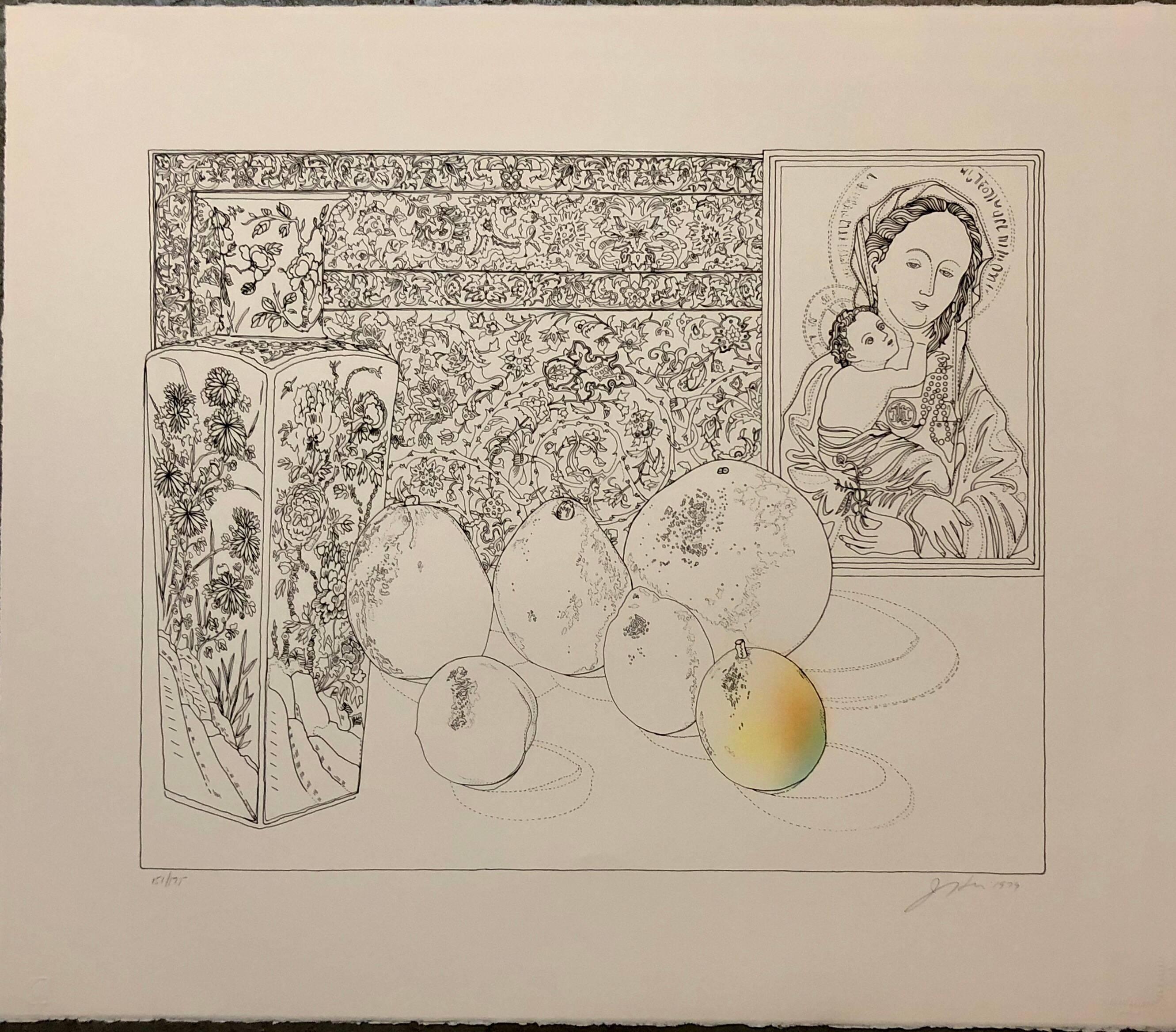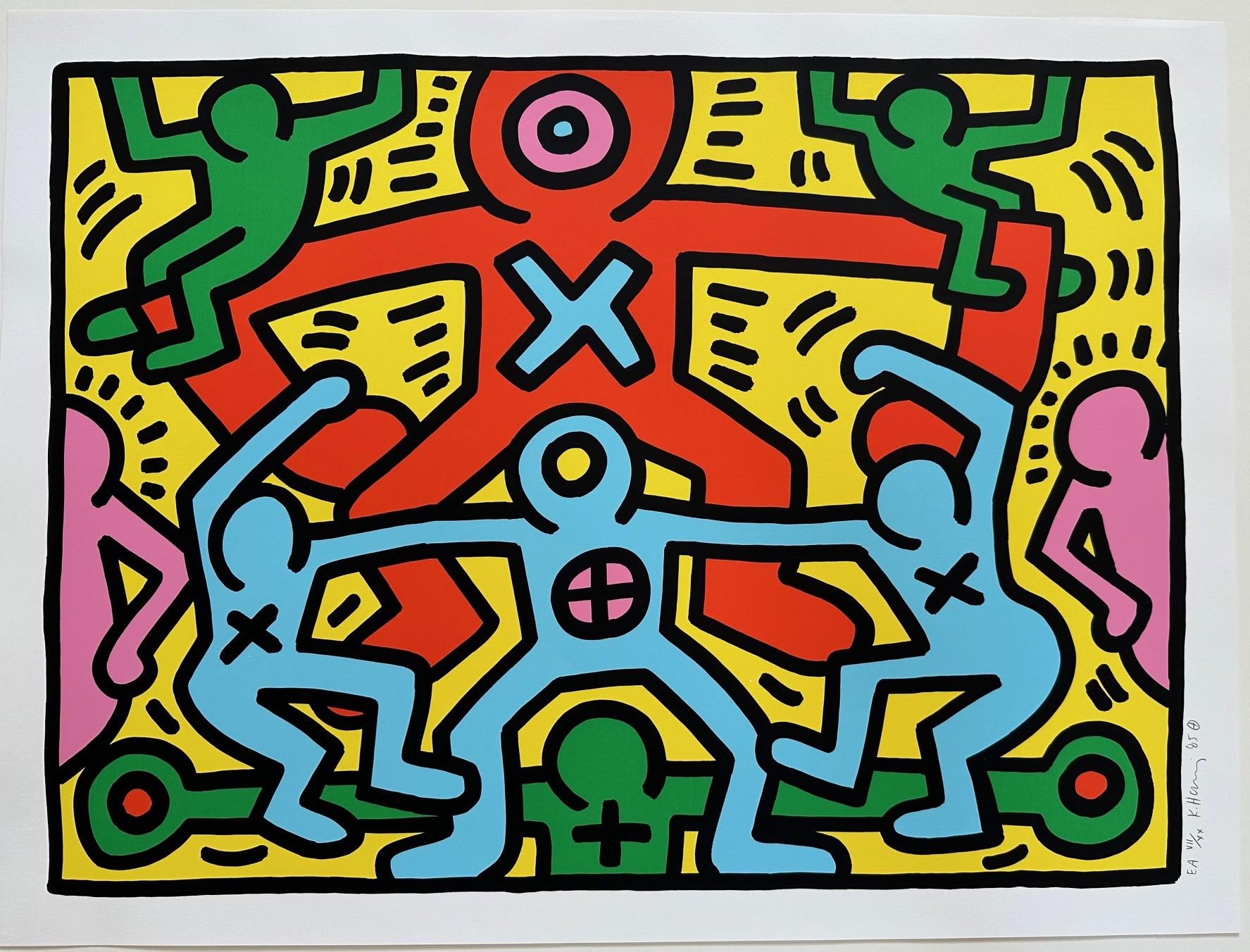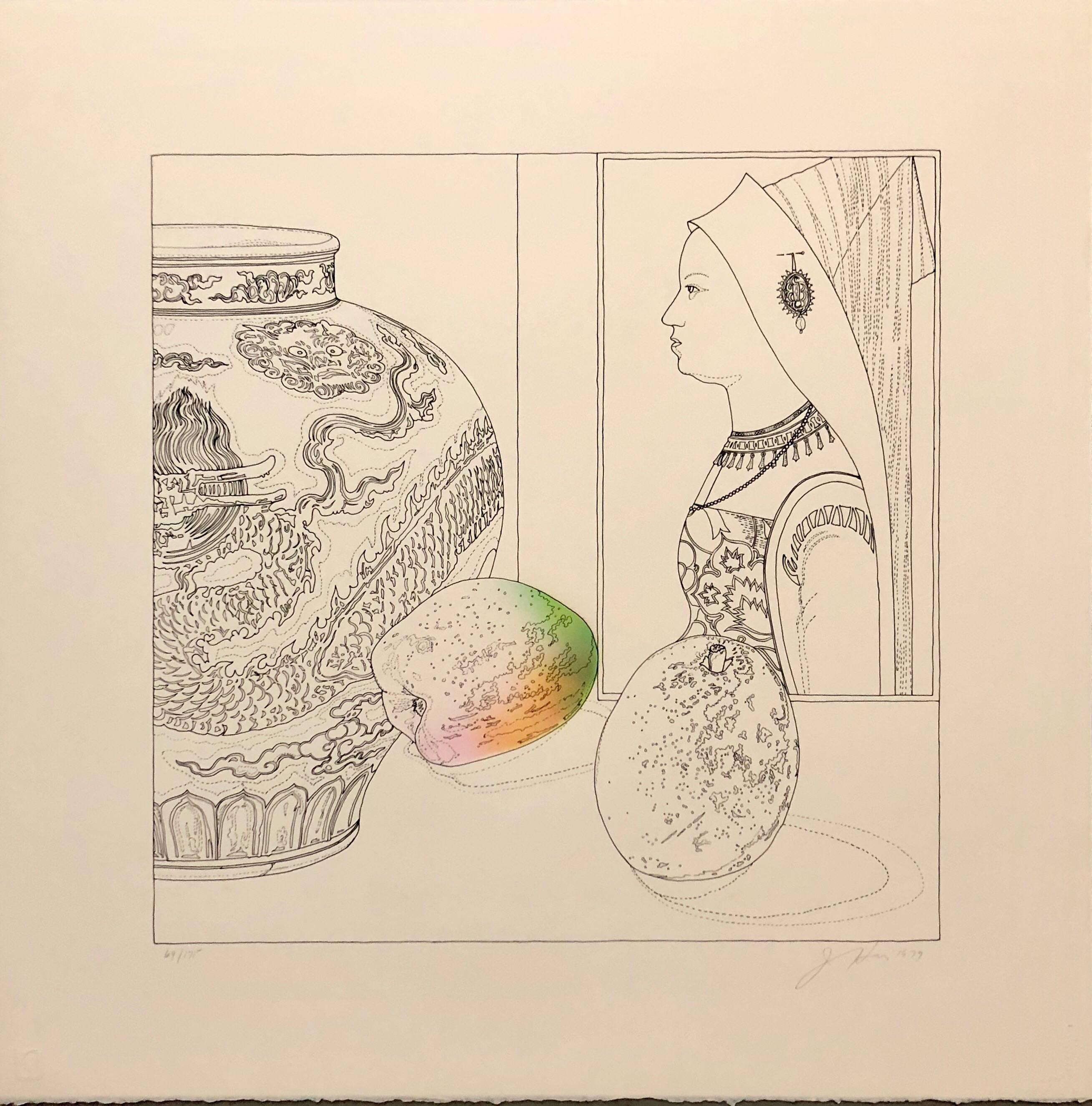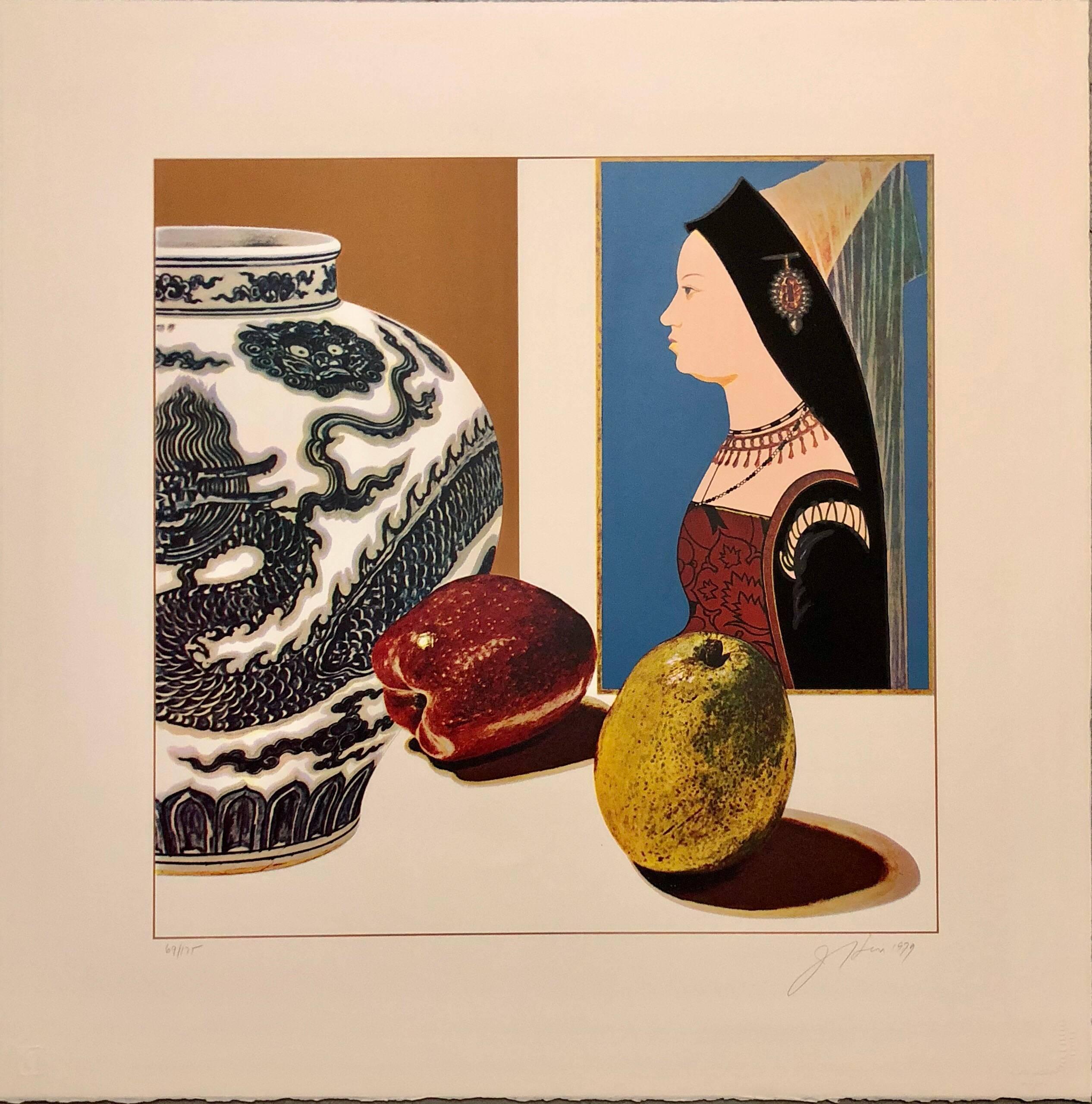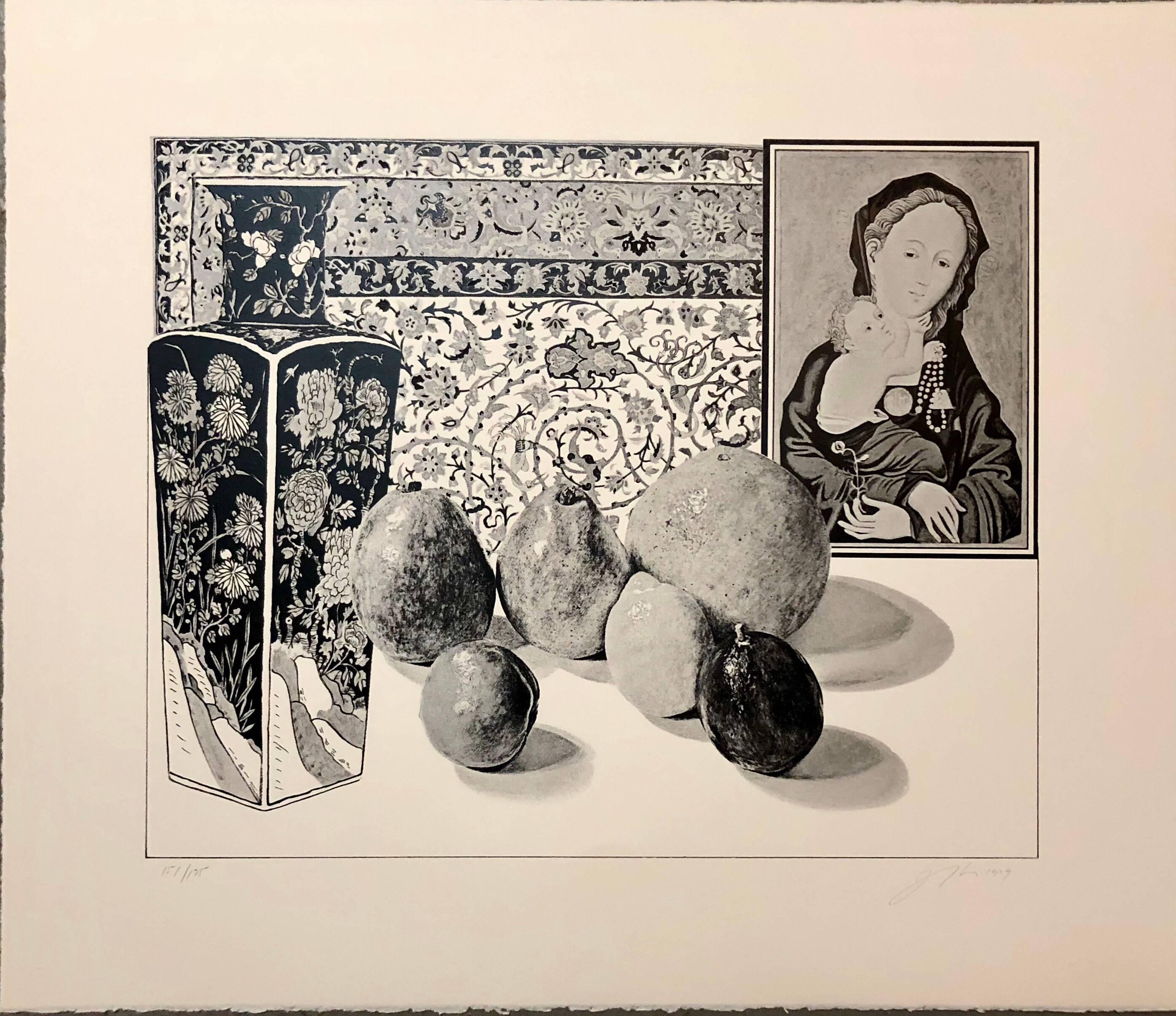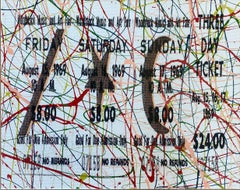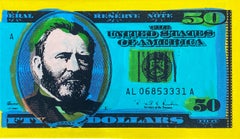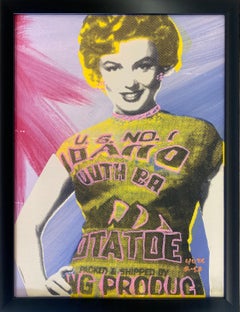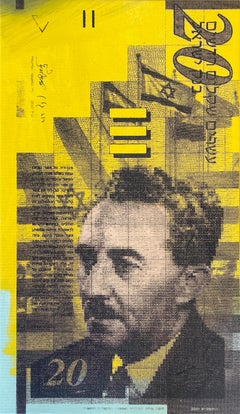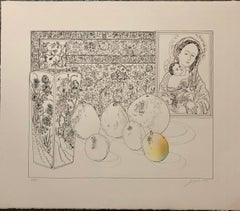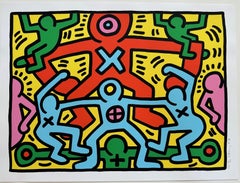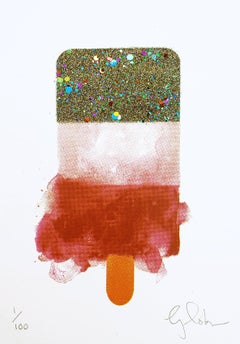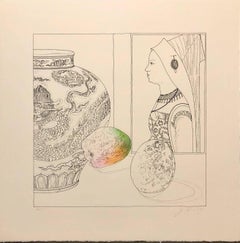Keith HaringGrowing (Plate 3), from the Growing Portfolio1988
1988
About the Item
- Creator:Keith Haring (1958-1990, American)
- Creation Year:1988
- Dimensions:Height: 44 in (111.76 cm)Width: 34 in (86.36 cm)Depth: 4 in (10.16 cm)
- Medium:
- Movement & Style:
- Period:
- Condition:
- Gallery Location:Hollywood, FL
- Reference Number:1stDibs: LU1453214231492
Keith Haring
Keith Haring began experimenting with his bold, graphic lines and cartoon-inspired figures on the walls of New York City subway stations in the early 1980s. He called them his “laboratory,” places to develop a radical new aesthetic based on an ideology of creating truly democratic public art.
Haring’s paintings, prints and murals address the universal themes of death, love and sex, as well as contemporary issues he experienced personally, like the crack-cocaine and AIDS epidemics. They derive much of their impact from the powerful contrast between these serious subjects and the joyful, vibrant pictographic language he uses to express them, full of dancing figures, babies, barking dogs, hearts and rhythmic lines, as well as references to pop culture.
To make his art even more accessible, in 1986, Haring opened the Pop Shop in Soho. In a foreshadowing of today’s intermingling of art and fashion, the shop sold merchandise and novelty items featuring imagery by Haring and contemporaries like Kenny Scharf and Jean-Michel Basquiat. While his works sometimes included text, for the most part, he chose to communicate through drawing.
“Drawing is still basically the same as it has been since prehistoric times,” Haring once declared. “It lives through magic.”
Find Keith Haring art on 1stDibs today.
- ShippingRetrieving quote...Shipping from: Hollywood, FL
- Return Policy
More From This Seller
View AllEarly 2000s Pop Art Figurative Prints
Canvas, Screen
Early 2000s Pop Art Figurative Prints
Canvas, Screen
Early 2000s Pop Art Figurative Prints
Canvas, Screen
Early 2000s Pop Art Figurative Prints
Canvas, Screen
1980s Pop Art Figurative Prints
Screen
1980s Pop Art Figurative Prints
Screen
You May Also Like
1970s Pop Art Figurative Prints
Lithograph, Screen
1980s Pop Art Figurative Prints
Screen
2010s Pop Art More Prints
Paper, Glitter, Mixed Media, Screen
1970s Pop Art Figurative Prints
Lithograph, Screen
1970s Pop Art Figurative Prints
Lithograph, Screen
1970s Pop Art Figurative Prints
Lithograph, Screen
